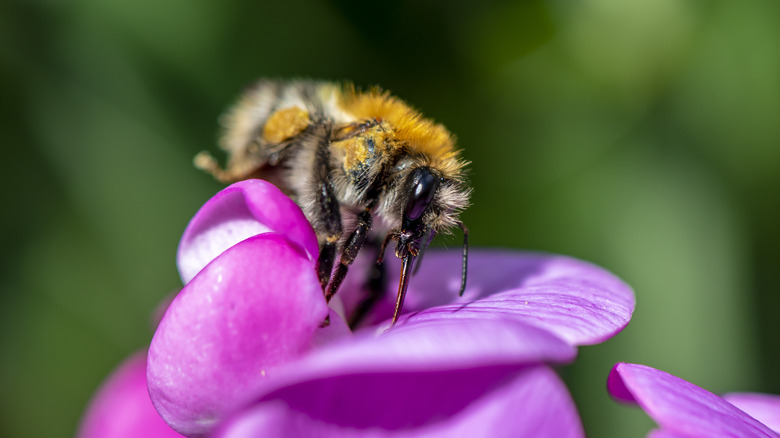Weeds are an unavoidable nuisance that threatens even the loveliest garden. The appearance of an errant stem prompts many to get out their gloves and go weed-pulling. It’s typically the best move, but there’s a certain purple ‘weed’ that you don’t need to worry about having on your lawn. Hairy Vetch is a beautiful purple legume that provides excellent crop cover and nectar for pollinators. Though it is considered invasive in some regions, you can manage the spread so your lawn benefits from its presence.
Hairy vetch, when controlled, is a companion plant that aids in the growth of whatever is near it. The U.S. Department of Agriculture recommends using vetch to limit soil erosion and elevate nutrient levels through a process called nitrogen-fixing. It’s also known for inviting bees, butterflies, and helpful beetles without having natural pests. Allowing vetch to remain in your yard promotes a natural ecosystem that promotes healthy plant production. If you spot this weed in your yard, consider letting it stay, but keep an eye on it.
Vetch makes a good companion plant for garden vegetables

Vetch is not edible and should not be consumed, but it is a fantastic companion plant for lawns and commonly grown vegetables. It is a nitrogen-fixing plant, which means it absorbs nitrogen from the air and converts it into nitrogen compounds like ammonia. The nitrogen compounds leech into the soil and are absorbed by neighboring plants. Garden vegetables like broccoli, cabbage, and peppers need high levels of nitrogen to flourish. By growing vetch alongside these crops, you can give them a steady supply of an essential nutrient.
Though it is considered a weed, hairy vetch makes an excellent cover crop. Because it grows in dense patches, vetch protects soil from direct sunlight. The lack of sun keeps the soil moist and limits the germination and growth of other weeds. According to Michigan State University, vetch is one of the best cover crops for its weed suppression and nitrogen fixation abilities. Less competition and more nutrients make for better crops and larger harvests.
It attracts pest-eating beetles and pollinators

Hairy vetch not only fixes and supplies large amounts of nitrogen but also attracts insects you’ll want in the garden. Pollinators like honeybees, for example, love drinking nectar from the weed’s colorful and fragrant petals. Bees, butterflies, and moths travel from plant to plant and shed pollen that promotes healthy blooms. So, offering vetch as a delicious treat results in more pollen for neighboring plants.
But the weed doesn’t just attract pollinators. It also attracts ground beetles. While Japanese beetles and other species are harmful to gardens, ground beetles are predators that eat other smaller insects. Ground beetles are adept at controlling pests that destroy or eat healthy plants. Though it invites pollinators and grounds beetles, there are no known major pest threats to hairy vetch. Letting vetch grow on your lawn or in your vegetable garden creates an ecosystem that benefits production. When you control hairy vetch it blankets weeds, protects and enriches soil with nitrogen, and invites helpful insects.